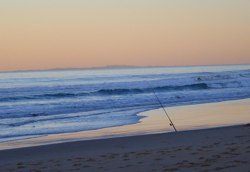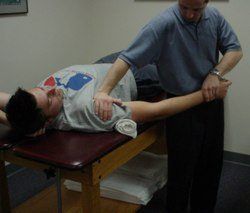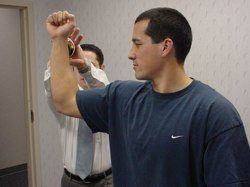It’s been a long summer of baseball and it is time to start thinking about your offseason training program!
Some people think of the offseason as a time to rest, or to get away from baseball, or to do everything they can to dominate again next season. I’ve seen every spectrum of player, from the player that wants to just sit in a tree stand until February to the player that comes in to train the first day of the offseason.
Offseason training programs in baseball are now standard. Believe it or not, this was not the case 20 years ago. However, I think there is another golden opportunity that many players do not take advantage of at the start of the offseason. Think of it as setting the foundation to prepare your body to get the most out of your offseason training.
Here is what I recommend and do with all my athletes at this time of year to get the most out of the start of your baseball offseason training.
Take Time Off From Throwing and Baseball

One of the most important aspects to the start of the baseball offseason is to take a step back and get away from baseball. While this may seem counterintuitive, I do believe it is critical to your long term success.
For professional baseball pitchers in MLB, the start of the offseason means spending time with family, golfing, hunting, fishing, and probably taking a well deserved vacation to somewhere tropical. It’s a long season, both physically and mentally.
I wouldn’t say that a summer of baseball is much easier for the younger baseball players, either. Between traveling teams, tournaments, showcases, and grinding away at practice, the summer is almost as busy as the pro players! I actually joke with some of my high school and college baseball pitchers that they can’t wait to go back to school to take a vacation from their summer baseball travel schedule!
But there are important physical benefits of taking time off as well. Throwing a baseball is hard on your body and creates cumulative stress. Furthermore, several studies have been published showing that the more your pitch, the greater your chances of injury:
- Pitching for greater than 8 months out of the year results in 5x as many injuries (Olsen AJSM 06)
- Pitching greater than 100 innings in one year results in 3x as many injuries (Fleisig AJSM 2011)
- Pitching in showcases and travel leagues significantly correlated to increased injuries (Register-Mahlick JAT 12, Olsen AJSM 06)
I have found that my younger athletes that play a sport like soccer in the fall, tend to look better to me over time. Sure, that is purely anecdotal. But specializing in a very unilateral sport may actually limit some of your athletic potential, especially when you are in the certain younger age ranges where athletic development occurs. Everything is baseball tends to be to one side. Righties always rotate to the left when throwing and swinging, heck everyone even runs to the left around the bases!
There is plenty of time to get ready for next spring. Take some time off in the fall and let your body heal up. You aren’t going to forget how to pitch or lose your release point or feel. You’ll come back stronger next season.
Regen Your Body

Tough travel schedule, long hours in a car, bus, or plane, cheap hotels, bad food, lack of sleep, inconsistent schedule. Sound familiar? That is a baseball season. It’s tougher than you would think on your body.
All of these factors, and more, wear down your body and it’s ability to regenerate. The constant stress to your body is a grind that drains your energy, increases your fatigue and soreness after an outing, and lengthens the time your body needs to fully recover between outings.
In order to get all that you can out of your off season training, you need to regen your body first. This begins with the first principle above and taking time away from throwing, but there are also other things you can do to reset and regenerate your body. You body needs to heal and sleep and nutrition are two great things to focus on at the start of the offseason. Here are a few things I recommend:
- Get on a consistent sleep schedule
- Sleep at least 8 hours a night
- Eat a clean diet while avoiding fast food and processed foods
- Hydrate, hydrate, hydrate
Think of it as allowing your body to get back to neutral so you can start building on a solid foundation during the offseason. You don’t want to start your offseason training with your body worn down.
Clean Up Any Past or Lingering Injuries

All my athletes start the offseason out with a thorough assessment that looks at all past areas of injury, regardless of whether or not they are currently symptomatic.
Many times, strength deficits, scar tissue, fibrosis, and several imbalances are still present after an injury, even if your are playing without concern. Your body is really good at adapting and compensating. It will find a way to perform. This is likely one of the reasons that the number one predictor of future injury is past injury, meaning if you strain your hamstring, you are more likely to strain it again. You probably never adequately addressed the concern.
You have to dig deep and find the root cause of the injury as well as clean up the mess created from the injury itself. Remember, many injuries occur due to deficits elsewhere in the body. Sometimes that elbow soreness is coming from your shoulder, for example. Resting at the start of the offseason is great for the elbow, but you didn’t address the cause of your elbow symptoms.
Rebalance Your Portfolio

By rebalancing your portfolio at the end of the year, you assure that you redistribute your assets evenly and minimize your risk.
This same concept is important for baseball training.
After a long season of wear and tear you no doubt are going to have imbalances. This happens even if you get through the season injury-free. I say this often, but throwing a baseball is not natural for your body. You’ll have areas of tightness and looseness, you’ll have areas of strength and weakness. You’ll have imbalances and asymmetries.
In my studies on professional baseball pitchers (you can find some of my published data here and here), and an article on baseball shoulder adaptations), I have found many things:
- You will lose shoulder internal rotation (if you don’t manage this during the season)
- Your will gain external rotation, which isn’t necessarily a good thing and needs to be addressed!
- You will lose elbow extension
- You will lose shoulder and scapular strength
- You will lose overall body strength and power
- Your posture and alignment will change
One of the most powerful things I can recommend for any baseball pitcher is that you get a thorough assessment at the end of the season. This serves as the most important day to me in your offseason program and the cornerstone of what I do with my athletes. We need to find out exactly how your body handled the season and adjusted over the way. Everyone responds differently.
Without this knowledge, your just throwing a program together and hoping everything works out. This may work one year, but it’s going to catch up to you eventually. Probably right in the middle of next season!
Set a Foundation for the Start of Your Baseball Offseason Training
What is the purpose of all this? Simply taking time off after a season isn’t enough anymore. Simply jumping into an offseason baseball training program isn’t enough anymore. Simply performing a baseball long toss program isn’t enough anymore.
You need to actively put yourself in the best position to succeed. Offseason training is the norm now a days. You used to be able to gain a competitive advantage by training your tail off all offseason, but your peers are doing this too. You can set yourself apart by setting a strong foundation BEFORE your offseason training. This is not as common and one of the biggest mistakes I see amateur baseball players make each offseason.
Set yourself apart by starting your offseason on the right path. Take some time off, regen your body, get your past injuries evaluated, and go through a thorough assessment to find ways to maximize your bodies potential. Do this before the start of your offseason training so you set a fantastic foundation to build upon.
Ready to get started? Learn more about what we do for baseball offseason performance training at Champion Physical Therapy and Performance.





